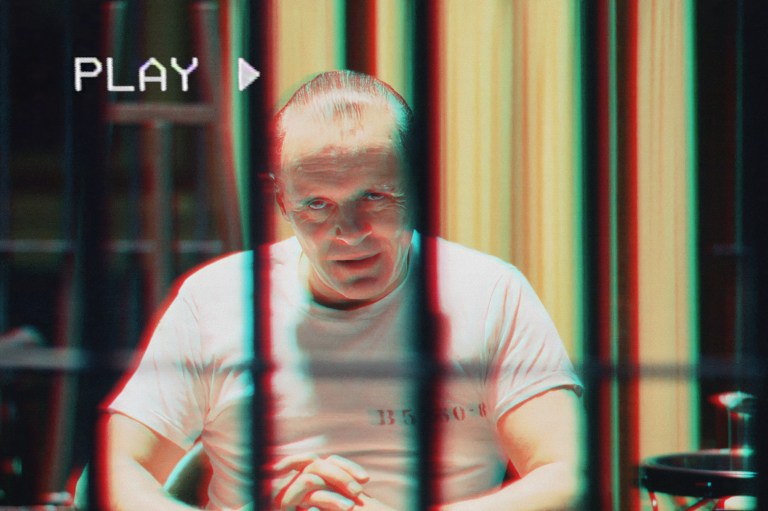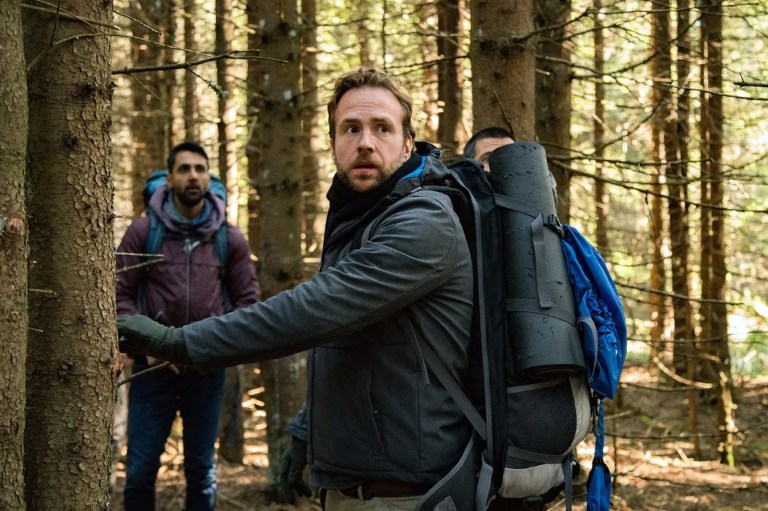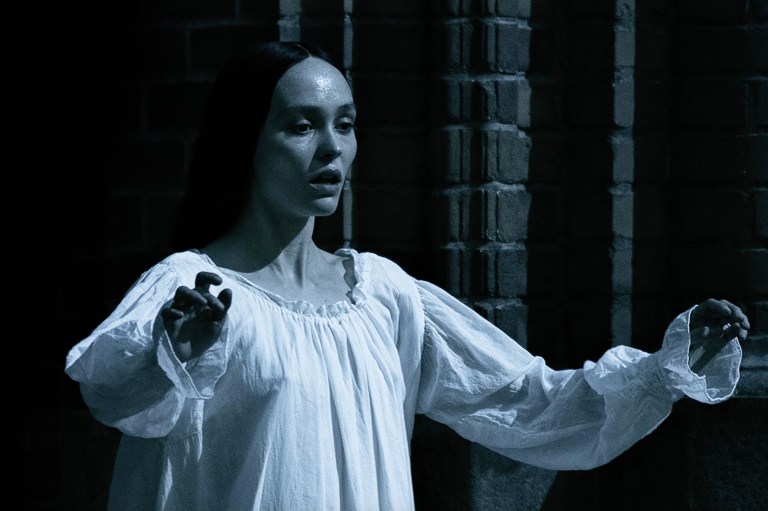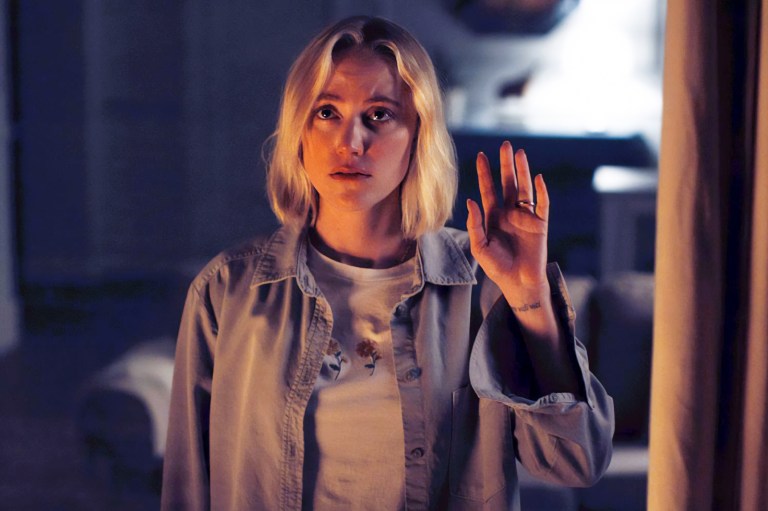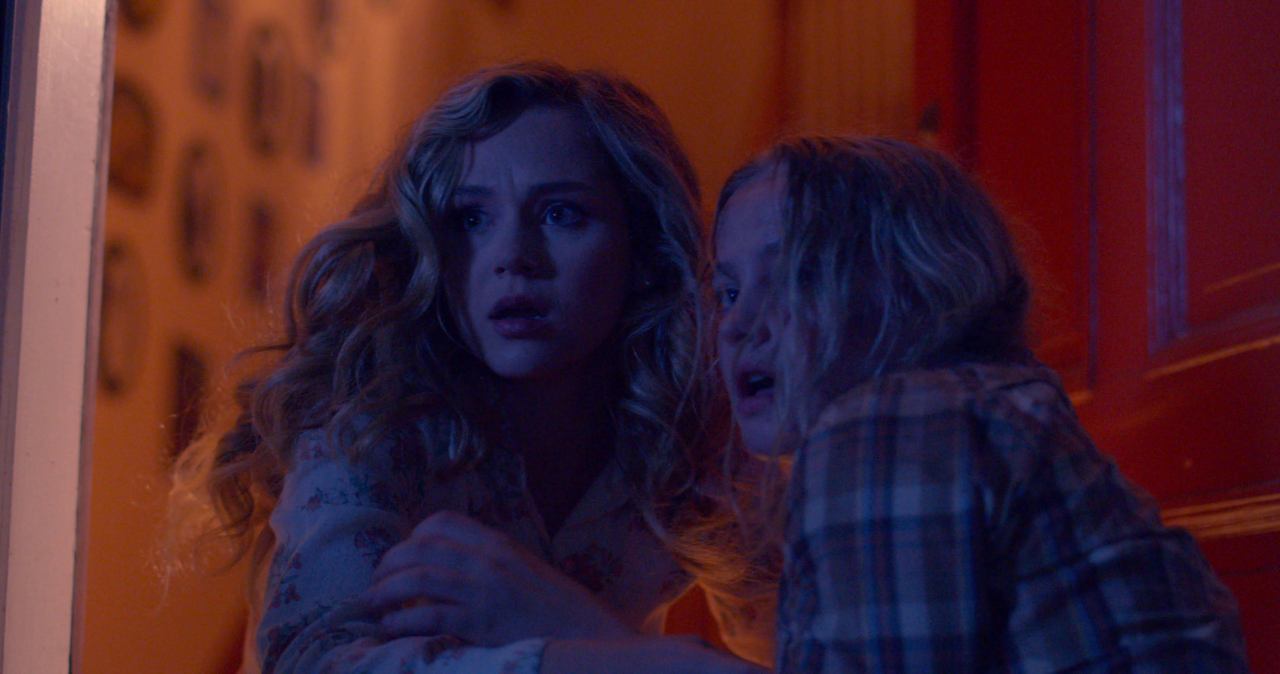
Review: ‘The Man In The White Van’ Scares Its Way To The Best Horror Film Of The Year
Warren Skeels’ The Man in the White Van proves that horror doesn’t need to be gory or bloody to be effective. It only needs to get under the skin and provoke a real-life fear in the viewer.
In this case, it surrounds the whole uneasiness around men in white vans that’s largely inspired by the true story of serial killer Billy Mansfield Jr.’s reign of terror in the ’70s and ’80s.
The Man in the White Van takes place in 1975 as it follows the young Annie Williams (Madison Wolfe) who starts to notice a white van stalking her. Unfortunately, Annie’s parents, Richard (Sean Astin) and Helen (Ali Larter), as well as her sister, Margaret (Brec Bassinger), don’t believe her due to Annie’s history of embellishing stories. Also, it’s the era before the concept of serial killers was readily accepted and people thought their perfect suburban utopia could never be compromised by such elements. So, what can Annie do? Not much, except survive.
Mild spoilers for The Man in the White Van follow.
It’s a Hitchcockian-inspired thrill ride that toys with the characters and audience
Taking a page out of thrillers from yesteryear, The Man in the White Van doesn’t give a name or face to the titular character of the film. Instead, it’s about what he represents when he steps into his van: Terror. Not since John Carpenter’s Christine has a vehicle induced as much dread in an audience as this white van does. Whether it’s the engine roaring to life, the headlights flashing a blinding white light, or a clever camera angle revealing it’s been standing there the whole time, the van embodies the role of the monster. Whenever it appears on screen, the tension escalates to hair-tearing levels.
However, like any great Alfred Hitchcock story, it’s also about what’s not on screen. Knowing the van could arrive at any second, or might be hiding out of the frame, keeps the viewer on their toes and stressing for Annie. The Man in the White Van director and co-writer Warren Skeels subscribes to the Hitchcockian notion of sustaining suspense at all times, and the filmmaker toys with Annie’s state of mind, having her question if she saw what she thinks she saw throughout the film, which creates a rollercoaster of emotions for the audience too. Cinematographer Gareth Paul Cox only adds to the uneasiness with another trademark Hitchcockian technique: Extreme close-ups of the characters that hide the outside world and focus on the internal dilemma.
Madison Wolfe is the new scream queen
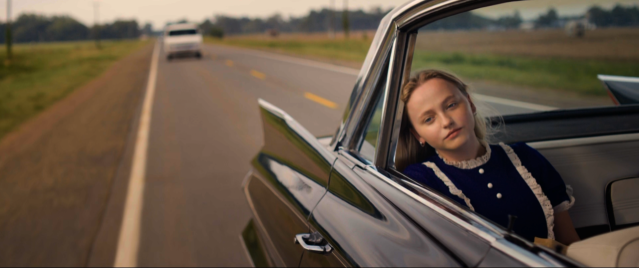
Those who watched The Conjuring 2 will be well aware of what Madison Wolfe is capable of in the horror genre. However, she steps it up in The Man in the White Van as she plays the vulnerable Annie who feels alone in this never-ending nightmare. Annie finds herself at a precarious time in her life as the middle child of the family. To paraphrase Britney Spears: She’s not a girl, not yet a woman. It’s an odd time as she struggles to relate to her younger brother, Daniel (Gavin Warren), and older self-involved sister, Margaret, so she finds solace in her horse, Rebel.
While she deals with puberty and discovering where she fits in the Williams family unit and life in general, Annie encounters the man in the white van. He doesn’t strike or do anything at first – only showing up wherever she is. Spooked by his constant and disturbing presence, she tries to tell her family about her fears. However, they minimize her concerns as nothing or play it down as her trying to get attention.
There’s no place to turn for Annie. Deep down inside, she knows he will attack and she needs to face this man in the white van on her own. But life doesn’t stop and she needs to carry on. Annie might be young and petrified, but like Laurie Strode or Sidney Prescott, she knows there’s no time to be afraid when the inevitable happens. Wolfe understands the do-or-die nature of Annie, embracing all the different facets of the character – from victim to fighter and survivor. She portrays her with a youthful innocence but also tenacity and courage. Don’t be surprised if you see Wolfe become the next big face of horror after this star-making performance.
‘The Man in the White Van’ leaves a long-lasting chill
What makes The Man in the White Van work is the era it takes place in. Everyone appears relaxed about their surroundings, finding it hard to believe that there is evil in the world – well, not in their town at least. The people are relaxed in direct juxtaposition to the horror on their doorstep. Their complacency invites the monster in, because he’s able to come and go as he pleases without anyone second guessing his motivations. It’s reminiscent of the quote: “The only thing necessary for the triumph of evil is for good men to do nothing.”
Unquestionably, it acts as both a reminder that the “good ol’ days” weren’t quite as good as everyone remembers and people need to be alert about what’s happening around them at all times. Equally important, when someone says they’re concerned about being stalked, they need to be believed and not dismissed. When it comes to spine-chilling horror, The Man in the White Van hits every nerve to the point in which it will have everyone side-eying the next white van they see on the road.

